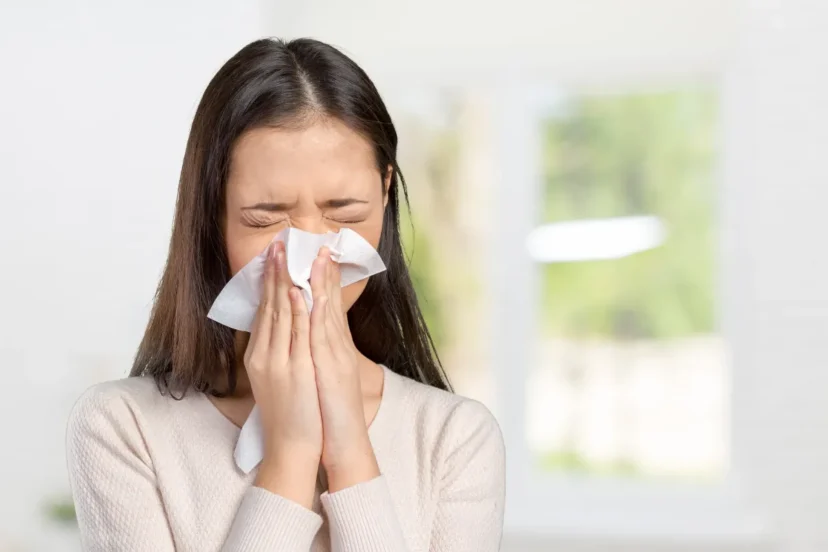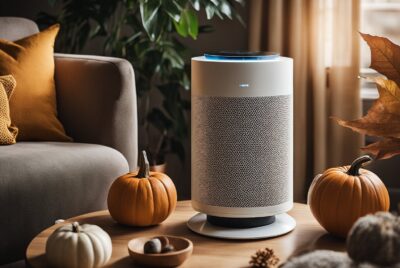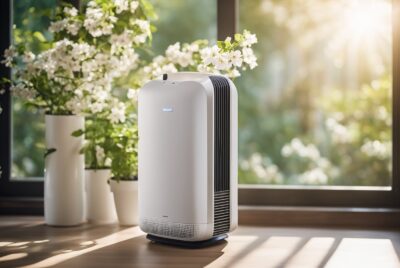Understanding the Health Risks of Air Purifiers in 2024
TL;DR
While air purifiers are designed to improve indoor air quality by removing pollutants and allergens, concerns arise about their potential to make users sick.
Some air purifiers, especially those using ionization or ozone generation, can emit ozone—a lung irritant that may exacerbate asthma and cause respiratory issues. However, models equipped with HEPA filters are highly effective at capturing airborne particles without producing harmful byproducts.
To avoid negative health effects, select air purifiers that do not generate ozone and ensure they are appropriately sized for the space. Regular maintenance and filter replacement is crucial to prevent secondary pollution and ensure the device’s effectiveness.
Ever wondered if those trendy air purifiers can actually make you sick? Let’s dig into this burning question and separate fact from fiction. Ionic air purifiers, touted as the ultimate solution for cleaner indoor air, have gained immense popularity. But are they causing more trouble than good? Can an air purifier make you sick? We need to understand the potential impact these devices may have on our health.
With concerns rising about the quality of indoor air, it’s crucial to address whether air purifiers could be a hidden culprit behind respiratory issues or other ailments. As we delve into this topic, we’ll explore the effects of these gadgets on our well-being and determine if they truly live up to their promises.
The Impact of Dirty Air Purifiers on Your Health
Dirty air purifiers can harm your health in several ways. It is important to understand the potential risks associated with using uncleaned air purifiers and the importance of maintaining clean air purifier filters for better health outcomes.
- Health issues caused by dirty air: When an air purifier becomes dirty, it can no longer effectively filter out pollutants and airborne particulates from the surrounding environment. This means that you may still be exposed to harmful substances such as dust, pet dander, and other allergens that can trigger respiratory problems or worsen existing conditions like asthma or allergies.
- Secondary pollution: Neglecting maintenance and allowing dirt and dust to accumulate in the air purifier can lead to secondary pollution. Instead of improving indoor air quality, a dirty air purifier may release these trapped particles back into the room, causing further harm to your health.
- Negative ion damage: Some air purifiers use negative ions to attract and neutralize airborne contaminants. However, if not properly maintained, these ionizers can produce ozone as a byproduct, which can irritate the lungs and contribute to respiratory issues.
To ensure that your air purifier doesn’t make you sick, it’s crucial to regularly clean or replace its filters according to manufacturer guidelines. By doing so, you will optimize its performance in removing pollutants from the air while minimizing any potential risks associated with dirty equipment.
Can air purifiers make you sick?
Air purifiers are designed to improve indoor air quality by removing pollutants and allergens from the air. In general, air purifiers are not known to make people sick. They can be beneficial for individuals with respiratory conditions or allergies, as they help to reduce the presence of irritants in the air.
However, it is important to note that certain factors can potentially make air purifiers contribute to sickness. For example, if an air purifier is not properly maintained and cleaned, it can become a breeding ground for mold, bacteria, and other harmful microorganisms. This can then circulate these contaminants back into the air, potentially causing respiratory issues or allergic reactions.
Additionally, some air purifiers produce ozone as a byproduct of their operation. Ozone can be irritating to the respiratory system and may worsen symptoms for individuals with asthma or other respiratory conditions. It is important to choose an air purifier that does not produce ozone or to use one with a low ozone emission level.
Furthermore, air purifiers can only filter the air that passes through them, so they may not be effective in removing certain types of pollutants, such as volatile organic compounds (VOCs) or chemicals. It is important to consider the specific needs and concerns of your indoor environment when selecting an air purifier.
Overall, while air purifiers are generally safe and beneficial for improving indoor air quality, it is important to choose the right type of purifier, properly maintain it, and consider individual sensitivities or concerns to ensure optimal air purification without causing any adverse health effects.

Understanding the Link Between New Air Purifiers and Sickness
New air purifiers have been associated with potential health issues, raising concerns among users. It is important to comprehend the connection between these devices and sickness to make informed decisions about purchasing an air purifier.
- Possible Connection: There is a possibility that using new air purifiers can lead to feelings of sickness. This could be due to various factors related to the device’s operation.
- Contributing Factors: One factor that may contribute to feeling unwell after using a new air purifier is the release of mold spores into the air. Mold growth in the device or its filter can introduce these spores, which can cause respiratory discomfort such as a sore throat or coughing.
- Crucial Understanding: It is crucial to understand this link so that individuals can weigh the benefits against potential risks before investing in an air purifier. By being aware of the possible health effects, users can make better-informed choices for their well-being.
- Addressing Concerns: Initial discomfort when using a new air purifier should not be ignored. While it may be temporary and subside over time as the device operates, it is essential to monitor any persistent symptoms and take appropriate action if necessary.
By comprehending how new air purifiers might be connected to sickness, individuals can make more educated decisions about whether or not they should purchase one. Awareness of potential factors contributing to discomfort after using these devices allows for proactive measures in maintaining a healthy indoor environment.
Remember, ensuring proper maintenance and regular cleaning of your air purifier can help mitigate any potential risks associated with mold spores or other pollutants commonly found in indoor environments.
Factors to Consider When Choosing an Air Purifier to Avoid Getting Sick
There are several important factors to consider. By understanding these key considerations, you can make an informed decision and choose the right air purifier for your needs. Here are some factors to keep in mind:
- Filter Type: One of the most crucial aspects is the type of filter used in the air purifier. HEPA filters (High-Efficiency Particulate Air) are highly effective at capturing small particles like allergens, pollen, and dust mites. Look for an air purifier with a HEPA filter or a HEPA-type filter for optimal results.
- Room Size: Consider the size of the room where you plan to use the air purifier. Different models have varying coverage areas, so it’s essential to choose one that can effectively clean the air in your specific space.
- Proper Airflow: Ensure that the chosen air purifier has proper airflow capabilities. Look for features like multiple fan speeds or adjustable vents that allow you to control and optimize airflow according to your preferences.
- Noise Level: Some air purifiers can be noisy, especially when operating at higher fan speeds. If noise is a concern for you, look for models with quiet operation or sleep mode options.
- Specific Features: Certain features can enhance an air purifier’s ability to prevent illness-causing particles from circulating in your home. UV-C technology is one such feature that helps eliminate germs and bacteria by using ultraviolet light.
Choosing an appropriate air purifier based on individual needs is crucial for avoiding sickness and maintaining good health. By considering factors such as filter type, room size, proper airflow, noise level, and specific features like UV-C technology or HEPA filters, you can select an effective air purification solution tailored to your requirements.
Common Symptoms Experienced After Using a New Air Purifier
Using a new air purifier can lead to some common symptoms as your body adjusts to cleaner indoor air. These side effects are usually temporary and nothing to be alarmed about. Let’s discuss the symptoms you might experience and why they occur.
Identifying common symptoms individuals may experience after using a new air purifier:
- Coughing: Some people may experience a temporary increase in coughing after starting to use an air purifier. This is often due to the initial removal of airborne particles, irritants, and allergens from the indoor environment.
- Sneezing: Similar to coughing, sneezing can also occur as your body reacts to the cleaner air. It is a natural response as your respiratory system adjusts.
- Headaches: In rare cases, individuals may experience mild headaches when first using an air purifier. This could be attributed to the release of odors or chemicals trapped in carpets, furniture, or other surfaces that are being eliminated by the purifier.
Discussing potential reactions like coughing, sneezing, or headaches due to adjusting to cleaner indoor air:
These reactions are not uncommon and should subside within a short period. They indicate that your air purifier is effectively doing its job by capturing and removing pollutants from the environment. As your body adapts, these symptoms will typically diminish.
Addressing temporary discomfort that might occur during initial usage periods:
It is important to note that any discomfort experienced during the initial usage period is usually temporary. Your body needs time to acclimate itself to cleaner indoor air quality, which can result in these minor inconveniences.
Providing reassurance by explaining these symptoms are typically short-lived:
Rest assured that these symptoms are normal and generally resolve on their own within a few days or weeks at most. If you find them bothersome or persistent, you may want to consider adjusting the settings on your air purifier or consulting a healthcare professional for further guidance.

Cleaning and Maintenance Tips to Prevent Illness from Air Purifiers
Regular maintenance and cleaning of your air purifier are crucial to ensure its effectiveness in improving indoor air quality. By following these practical tips, you can prevent the risk of illness caused by a poorly maintained air cleaner.
Filter Replacement or Cleaning
- Regularly replace or clean the filters: Over time, the filters in your air purifier can become clogged with dust, allergens, and other particles. This can hinder the purifier’s ability to effectively clean the air. Make sure to check the manufacturer’s instructions for guidance on when and how often to replace or clean the filters.
- Use high-quality filters: Investing in high-quality filters is essential for efficient filtration. Look for HEPA (High-Efficiency Particulate Air) filters that can capture even small particles like pollen, pet dander, and mold spores.
- Consider using permanent filters: Air purifiers with permanent filters are a great option for preventing illness and maintaining clean air in your home. These types of filters are designed to be reusable and can save you money in the long run.
Proper Maintenance Techniques
- Clean the exterior regularly: Dust and dirt can accumulate on the surface of your air purifier, reducing its efficiency. Wipe down the exterior with a soft cloth or use a vacuum cleaner with a brush attachment to remove any debris.
- Prevent bacteria and mold growth: Moisture build-up inside an air purifier can lead to bacterial growth or mold formation, which may circulate harmful contaminants back into your living space. To avoid this:
- Empty and clean any water reservoirs according to the manufacturer’s instructions.
- Keep humidity levels in check by using a dehumidifier if necessary.
- Ensure proper ventilation in your home to minimize moisture accumulation.
A Healthier Indoor Environment
By adhering to these cleaning and maintenance tips for your air purifier, you can create a healthier indoor environment for yourself and your family:
- Minimize exposure to airborne allergens: Regular filter replacement/cleaning ensures that allergens are effectively trapped, reducing allergy symptoms.
- Reduce the risk of respiratory issues: Removing pollutants from the air can help prevent respiratory problems, such as asthma or bronchitis.
- Eliminate unpleasant odors: Air purifiers with activated carbon filters can help eliminate odors caused by cooking, pets, or smoke.
Maintaining your air purifier not only ensures its longevity but also maximizes its ability to provide cleaner and healthier air. Take these simple steps to keep your air cleaner functioning optimally and safeguard your well-being.
How Long Does It Take for an Air Purifier to Affect Your Health?
Air purifiers can have a positive impact on your health, but the timeframe for noticing these effects may vary. Several factors influence how quickly you may experience improvements, including the size of the room and pollution levels. It’s important to have realistic expectations regarding when you can observe health benefits after using an air purifier since individual experiences may differ based on specific circumstances.
Here are some key points to consider:
- Timeframe: The exact time it takes for an air purifier to affect your health depends on various factors. While some people might notice immediate changes, others might take longer to experience any difference.
- Room Size: The size of the room plays a role in how quickly an air purifier can make a noticeable impact. Smaller spaces tend to see results more rapidly than larger areas.
- Pollution Levels: If you live in an area with high pollution levels, it may take longer for an air purifier to show significant improvements. The severity of pollutants present in the environment affects the purification process.
- Realistic Expectations: It’s essential to set realistic expectations when using an air purifier. While they can enhance indoor air quality, don’t expect instant miracles. Consistent use over time is key.
- Individual Experiences: Everyone’s circumstances are unique, so individual experiences will vary. Factors like pre-existing health conditions and sensitivity to allergens also play a role in how quickly one notices improvements.
Remember that patience is crucial when using an air purifier for better health outcomes. By understanding these factors and having reasonable expectations, you can make informed decisions about utilizing air purifiers as part of your overall wellness strategy.

Frequently Asked Questions (FAQs)
Under certain circumstances, such as using the wrong type of purifier for your needs or not maintaining it properly, an air purifier might contribute to discomfort or sickness.
Using an old or dirty filter in your air purifier can compromise its effectiveness and potentially worsen the quality of the air you breathe. It is recommended to regularly clean or replace filters according to manufacturer guidelines to ensure optimal performance.
Running an air purifier for extended periods is generally not harmful. However, it’s important to follow manufacturer instructions and avoid overusing ozone-generating models, as high levels of ozone can have negative health effects.
While air purifiers with HEPA filters are highly efficient at capturing and removing allergens, it’s impossible to completely eliminate all allergens from your home. Regular cleaning, dusting, and maintaining proper ventilation are also essential for reducing allergen levels indoors.
The number of air purifiers needed depends on factors such as room size and specific needs. In general, placing one unit in a central location can help improve overall indoor air quality. However, larger homes or areas with higher pollution levels may benefit from multiple units placed strategically throughout the space.
Ionizing air purifiers release charged particles into the air to remove pollutants. While they can be effective at eliminating certain contaminants, they also produce small amounts of ozone which can be harmful when present in high concentrations. It’s important to choose ionizers that meet safety standards and use them according to manufacturer guidelines.
Balancing the Benefits and Risks of Air Purifiers for Your Well-being
Understanding the potential benefits and risks associated with air purifiers is crucial in making an informed decision about your well-being. By evaluating these factors, you can determine whether air purifiers are right for you.
Addressing personal sensitivities or allergies is an important first step. Air purifiers can help alleviate symptoms by removing harmful allergens from the air, such as dust, pollen, and pet dander. This purification process improves the overall quality of the air you breathe, promoting better health and easier breathing.
Airflow plays a significant role in how electronic air purifiers work. These devices utilize filters or ionizers to remove particulates from the air, ensuring that harmful particles are trapped and prevented from circulating in your living space. With clean air free from pollutants, you can enjoy a healthier environment.
While electronic air purifiers offer numerous benefits, it’s essential to consider any potential risks they may present. Some individuals may experience adverse effects due to ionizers or certain types of filters used in specific models. Understanding your sensitivities will help you evaluate these risks effectively.
In most cases, however, air purifiers provide significant advantages for your well-being. They improve indoor air quality by eliminating harmful allergens and pollutants that can trigger allergies or asthma symptoms. By removing particles and improving oxygen levels, these devices contribute to a healthier living environment overall.
To make an informed decision about using an air purifier, consider your individual needs and circumstances. Evaluate any existing health problems or concerns related to allergies or asthma that could benefit from cleaner indoor air. By weighing both the benefits and potential risks associated with these devices, you can find the right balance for your well-being.
Remember that understanding personal sensitivities is crucial in evaluating risks while acknowledging their significant benefits for most individuals’ health.




